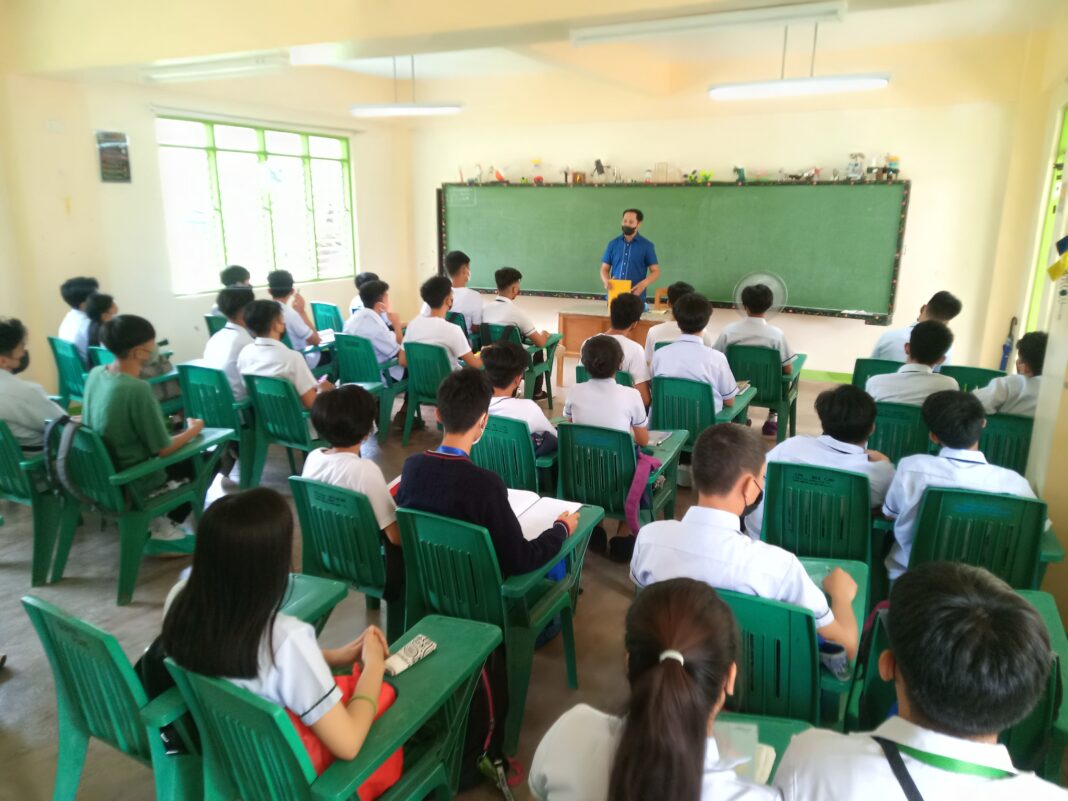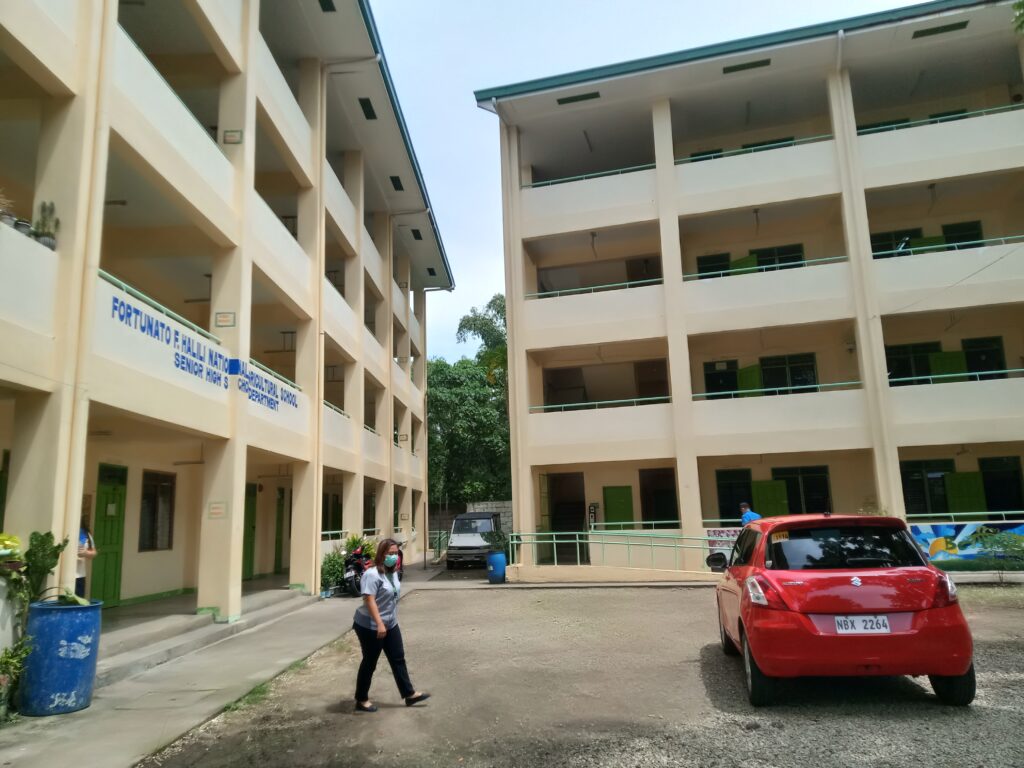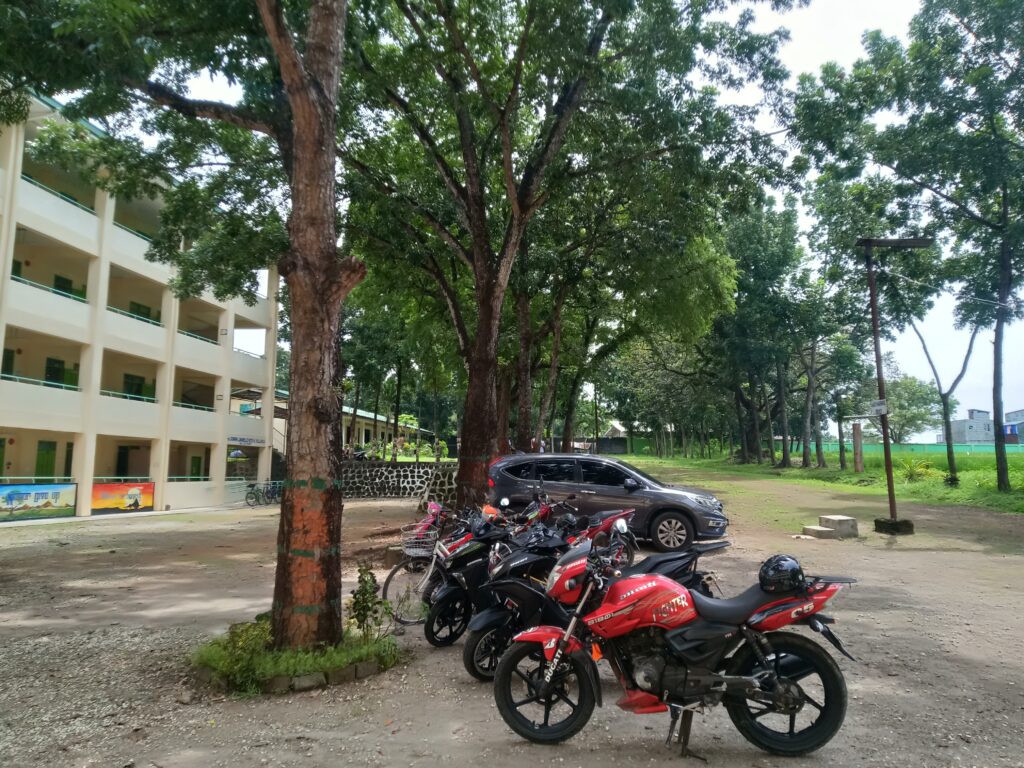
STA. MARIA, Bulacan— What appeared to be alarming pandemic-related spate of disappearances of teenage high school girls and a recent case of suicide involving a 20 year old college freshman are all isolated cases as students returned to face to face classes with readiness and high level of mental and emotional stability.
Department of Education (DepEd) 2022 Order No. 34 makes sure the teachers are ready and well equipped with methods and techniques in gauging the student’s current mental, emotional and psychological readiness as they return to in person learning after two years of online and modular classes brought by the COVID-19 pandemic.
Bulacan’s 21 towns and three cities have more than 600,000 elementary and high school students in both public and private schools.
Through psychosocial support activity pack training program for them, they were provided with methods and ways to help bridge the healthy socio-emotional wellbeing of their students to academic performance which are meant to build safety, self-awareness and self-regulation.
Maj. Jaynee Udal, chief of the Bulacan Provincial Police Office Women and Children’s Desk said the cases of disappearance of a grade 9 junior high school student in Calumpit, a grade 8 junior high school student in City of Malolos and the grade 11 senior high school student in Guiguinto in May and June were all run-away or gone astray cases because of family problems.
The case of a 20 year old woman college freshman who had committed suicide last month was also rooted in a family issue.
All these according to Udal are considered pandemic and post-pandemic domestic concerns wherein the teenagers were left trapped inside their houses, forced to work part time while attending distant learning classes to help in the family’s earnings, peer pressure, disturbance brought by social media and other family and socially-rooted issues. “These girls were not abducted contrary to spreading reports, they were hardheaded,” Udal told NEWS CORE.
Cecille Custodio, head of Schools Division of Bulacan – School Governance and Operations Division (SGOD) who conducted the training for Bulacan teachers have the same assessment that the cases of run-away teenage girls and the reported college freshman suicide which were caused by family concerns and problems remain isolated.
She said the psychosocial activity pact program during the first week of classes helped capture the current emotional and mental readiness of the students as the online and modular learning ended and they now have to physically go back to school for the resumption of the face to face classes. The psychosocial pact program hears them out, made them understand the adjustment and teach them to brace the new normal for themselves, their family and for the community so that they will not be a burden to anyone.
Under the support packet, the teachers made the students to express themselves and their feelings by providing answers to three guide statements “I am,” “I Learn,” and “I can”.
I am required learners to acknowledge and express their feelings; I have would need learners to be able to have a capacity to regulate their emotions and find solutions to challenges while I can would need learners to do their best in school, develop healthy relationships with peers and imagine a bright future for themselves.
At Fortunato F. Halili National Agricultural High School in Barangay Guyong in this town, the 2,000 junior and senior high school students have displayed emotional and mental readiness in returning to face to face classes, according to school guidance counselor Niña Mariñas.
Mariñas said in each of the 43 sections in junior high school and 19 in senior high school, only a handful of 3-5 students have showed indifference as face to face classes resumed. “Very less have manifested sadness or being problematic, even less than 5%,” she told NEWS CORE on Wednesday.
Class advisers presented different emoticons on the board—happy, sad, surprised or shock, angry and sick and each of the students chose the emoticon that describes what were they thinking and what were their emotions.

The happy emoticons correspond to the excitement and joy of the students in the resumption of face to face classes, back to better learning methods and experiences and an end to self-study and reuniting with classmates, teacher and peers.
Behind the sad emoticons were family and online classes problems, financial difficulties and helplessness, the poor quality of learning including some with issues with their parents and siblings. “Many wrote that they could not study well because of the house chores given to them by their parents, some have to find jobs and work while attending online classes while others could not understand the lessons all by themselves and without the help of the teachers,” she added.
Jasmine Ignacio, class adviser of Grade 9 Silang directed all her students to crumple and throw away the paper where they wrote down their negative, sad and troublesome experiences during the two years pandemic including thoughts and fears towards the return to face to face classes to signify dispelling them out for a bright new beginning.
Czarina Yap. adviser of grade 7-Aguinaldo said through a reading exercise, she discovered that still, there were students who read very poor. She encouraged them to practice more and not to be dissuaded. She assured them of the full support of the teachers and the school.
Ferdinand S. Fernando, class adviser of 12-Citrine senior high school said one of his psychosocial support pact programs was the inhale exhale rhythm where he tell students to breath out the negative emotions and feelings and to breathe in the goals and all the positive energies and thoughts both in their homes and in school and community. “The exercise was to relieve them from tense to relax mode and emotions,” he said.
Fernando ads that he immediately sent home a few student who displayed sick emoticons.
With scenic beauty, green environment and fresh air atmosphere, the school premise itself is a place for sigh and relief from the daily grinds of both the students and the teachers, Mariñas said of which she advised them to just breathe and enjoy the surroundings whenever they felt troubled.
Because the first week of classes were cancelled due to typhoons, answers to “I have,” Mariñas said, were more on helping address flooding, helping provide home to the homeless, prepare food and share them with others through feeding program, be of help to the family, help other people in need.
In Gen. Gregorio Del Pilar Integrated School in Bulakan town, grade 6 elementary Special Science Program students were asked by their teacher Mary Grace Ramos to write down the hardships and struggles they experienced during the pandemic. After reading them before the class, Ramos explain the problem and gave words of support to the children.

“Many of the students experienced difficulties during the online learning because their parents were at work and there is no one to assist them in their studies,” Ramos said.
In other classes, Ramos required the pupils to draw their emojis and similarly, happy and smiling emotions were drawn more than the sad ones.
Custodio said there are teachers who create secret social media accounts only to follow and monitor the social activities of the students as one way of watching and guiding. “If there are bright students, there are also bright teachers,” she said.
Bulacan Provincial Social Welfare and Development Officer Rowena Joson-Tiongson said these teenage girls run away cases have stopped and all the girls were reunited with their respective families.
The concern municipal and city social welfare and development officers (MSWDO/CSWDO) had provided counseling to these run-away students and their families, Tiongson said.
The MSWDO’s and CSWDO’s have full coordination in all schools both public and private for the counselling and social concerns and needs of the students.






